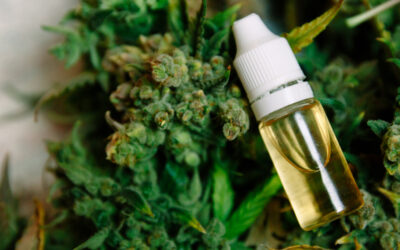[vc_row][vc_column][vc_column_text]In the first of a weekly series from our CEO, Dr. Stuart Titus, he provides insights into some of the most compelling trends in cannabis industry legalization, as well as where they might lead us. If you have a question you’d like Dr. Titus to answer in his weekly column, contact us!
—
Recent times have been incredibly positive for the future of medical cannabis as the overall industry has seen far greater acceptance within the general public. There are a number of factors involved, including:
- Tremendous reception via the legal cannabis marketplace in Colorado
- Higher tax revenues for the State
- A mini-economic boom within Colorado
- Lower crime rates
- The actual experience that – yes, this can be made workable
- Significant research into therapeutic possibilities of cannabinoids
- Early and late-stage clinical trials look favorable for Epidiolex
- Research from Israel showing numerous potential medical benefits
- Metabolic syndrome, including heart, cardiovascular, diabetes and rheumatoid arthritis
- Further research showing benefit for bone healing including osteoporosis
- A PTSD Study has now been DEA approved in the USA
- Increasing awareness of CBD as a non-psychoactive therapeutic agent
- 17 US States have CBD-Only Laws on their books
- Worldwide acceptance, including Latin America
- Brazil legalizes RSHO in April 2014, becoming the first Latin American country to accept a legal cannabis-based product
- Mexico legalizes RSHO-X in Feb 2016, effectively ending the failed War on Drugs
- Paraguay accepted our company’s products as of May 15, 2016
- Increasing public awareness that the US Government actually holds a patent on the therapeutic usage of cannabinoids – US patent # 6,630,507
- Cannabinoids as Antioxidants and Neuroprotectants
- Potential benefits for Metabolic Syndrome patients
- Potential benefits for neurological patients
- Alzheimer’s
- Parkinson’s
- HIV Dementia
- Cannabinoids as Antioxidants and Neuroprotectants
- Increasing public frustration with “traditional medicine” including the Opioid crisis that has been at the forefront of high-level government attention
- Opioids are addictive and dangerous. Thousands die each year from overdose.
- Marijuana shows potential as a far safer alternative:
- No one has ever died from an overdose of natural botanical cannabis.
- The receptor sites for cannabis are in a different location that the receptor sites for opioids.
- States where marijuana is legal are now showing a 25% lower incidence in opioid-related overdose death rates –presumably because patients can combine lower dose opioids with marijuana for better pain relieving effect.
Overall the trend toward the legalization of all cannabis products has taken huge steps forward in recent years. Currently there are 25 States that have approved medical cannabis (actually 26 if one includes Louisiana’s limited new laws and regulations). Interestingly the two most recent states, Pennsylvania and Ohio allow for numerous medical conditions to fall under this category (Pennsylvania: 18 medical conditions qualify for the medical cannabis program and Ohio: 21 conditions qualify). This will provide research incentives for universities and pharmaceutical companies for many years to come.
Countries such as Italy, Czech Republic, Uruguay have all allowed medical cannabis, joining such countries as Canada as progressive in their thinking. Our neighbor to the north, Canada has elected a new Prime Minister, Justin Trudeau in the fall of 2015 – and the cannabis issue was a major factor in the outcome. We expect recreational cannabis legislation to be proposed in the Spring of 2017 within Canada by the newly elected Progressive party. More recently, Colombia, South America legalized medical cannabis and in Uruguay, the country has a recreational program wherein the government provides low cost cannabis to qualifying in-country citizens.
In the US – there are a tremendous number of potential state initiatives up for ballot vote in November 2016 – a Presidential election year, which generally holds the highest voter turnout. There are at least 15 ballot measures within 12 states that may well change the face of cannabis within the United States. Currently over half of all Americans have some form of potential access or qualification where they can obtain State-legal medical cannabis. Certainly this trend looks to expand – with additional indications for use being approved in those already legal states – to new states exploring the benefits for constituents.
Thus the medicinal benefits of cannabis and cannabinoid products are being proven out by science – which compliments what many people are so passionate about – that cannabis is really good for us in many ways and belongs in our diet.
Ongoing research into the Endogenous Cannabinoid System – our internal cannabinoid production and neurotransmitter system, shows that this is the largest self-regulatory system within the human body. Regulating homeostasis – or allowing the body to function and maintain itself in the proper environment, the Endogenous Cannabinoid System governs functions of sleep, mood, appetite and hormone production. Supporting our bodies with these plant based cannabinoids allows us to receive proper nutrition for optimal health.
The Cannabis plant family – including both marijuana and hemp holds significant value for us. As mammals, we all have this endogenous cannabinoid system within us. Our bodies are meant to accept cannabinoids.
More on “Nutrition vs. Disease” in my next column and then more on Hemp Seed Nutrition in future columns.
To good health –
Dr. Stuart W Titus, President & CEO
Medical Marijuana Inc.
(OTC: MJNA)[/vc_column_text][/vc_column][/vc_row]






